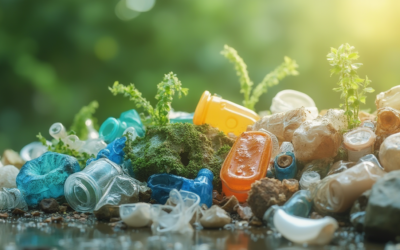Single-use plastics, seemingly convenient, contribute alarmingly to global pollution, threatening ecosystems and human health equally. This in-depth post explores the dire consequences of single-use plastic pollution and the pivotal strategies for its mitigation.
Key Takeaways
- Environmental toll – Single-use plastics contribute significantly to global waste and pollution.
- Health impacts – Microplastics from single-use products pose serious risks to human health.
- Sophisticated alternative solutions are emerging to combat single-use plastic usage.
- Effective policy interventions can significantly reduce the environmental footprint of plastics.
- Civic actions and education prove crucial in shifting public behaviors towards sustainable practices.
Table of Contents
- Overview of Single-Use Plastic Pollution
- Environmental and Health Impacts
- Innovative Solutions and Policy Actions
- Role of Individual Actions and Awareness
- Conclusion
Overview of Single-Use Plastic Pollution
Single-use plastics, which encompass items like water bottles, straws, and wrappers, dominate our waste streams due to their prevalent yet disposable nature. These materials, engineered for one-time use, linger in environments, perpetuating a cycle of pollution and waste.

Environmental and Health Impacts
The proliferation of single-use plastics affects various ecosystems; macro and microplastics litter oceans, rivers, and landscapes, disrupting the life cycles and health of marine and terrestrial wildlife.

Human Health Concerns
Microplastics have become so pervasive that they are now found in our food supply and even within human bodies, raising grave concerns about physical health risks, including endocrine disruption and cancer.
Innovative Solutions and Policy Actions
Progressive strategies are being implemented worldwide to tackle the issue of single-use plastic waste. Innovations in biodegradable materials and significant policy shifts are setting the groundwork for a sustainable future.

Role of Individual Actions and Awareness
Every individual holds the potential to impact positive change through choices and actions daily, such as opting for reusable products over single-use plastics.

Community engagement and education also play critical roles in altering consumption patterns and advocating for systemic changes.
Conclusion
While the challenges posed by single-use plastics are daunting, the combined efforts of global policies, innovative alternatives, and community actions light the path toward mitigating pollution and embracing sustainability.
Discover more about how you can be part of the solution by visiting Turning the Tide on Plastic Waste: Bhumi’s Innovative Solutions, and explore The Environmental Impact of Plastic Waste and Sustainable Alternatives to learn about sustainable practices that can replace single-use plastics.
Concerned about microplastics? Read more on Microplastics in Drinking Water: Understanding the Hidden Dangers to understand the risks and preventive measures.
Support Bhumi’s initiatives for a sustainable future by donating here or join us at our upcoming events by checking our contact page.




